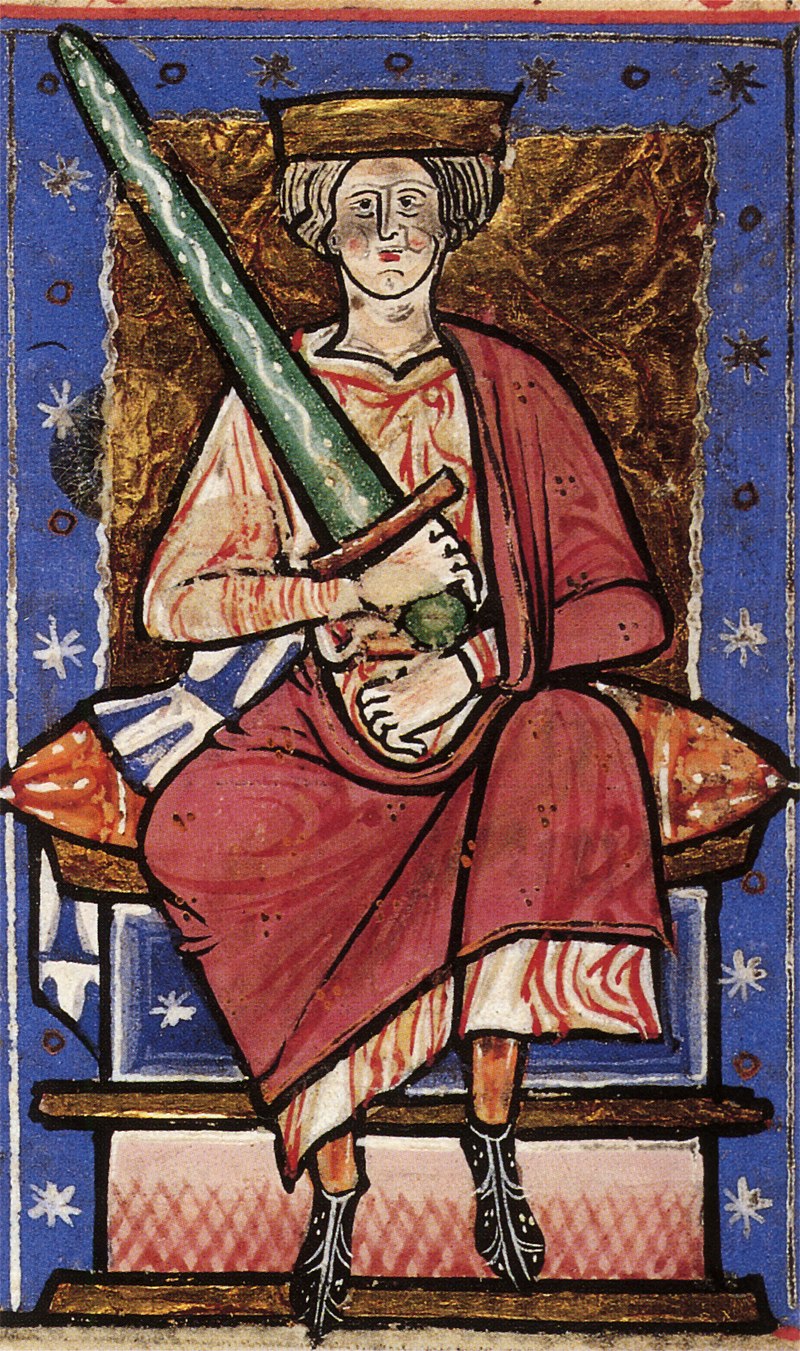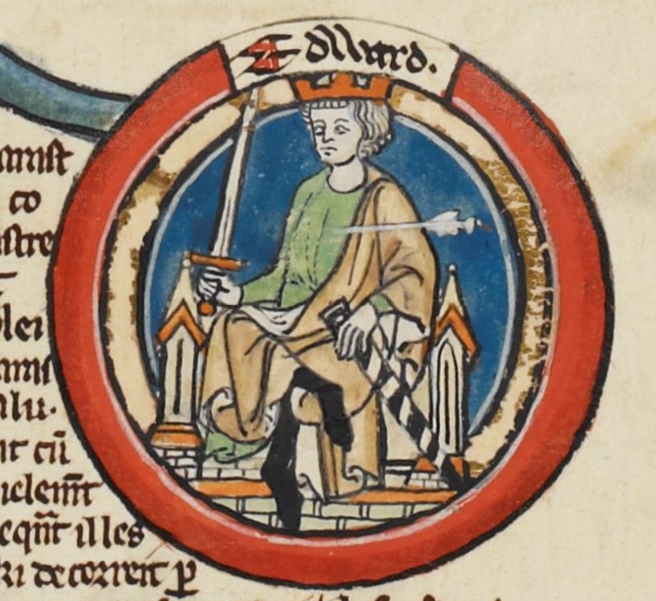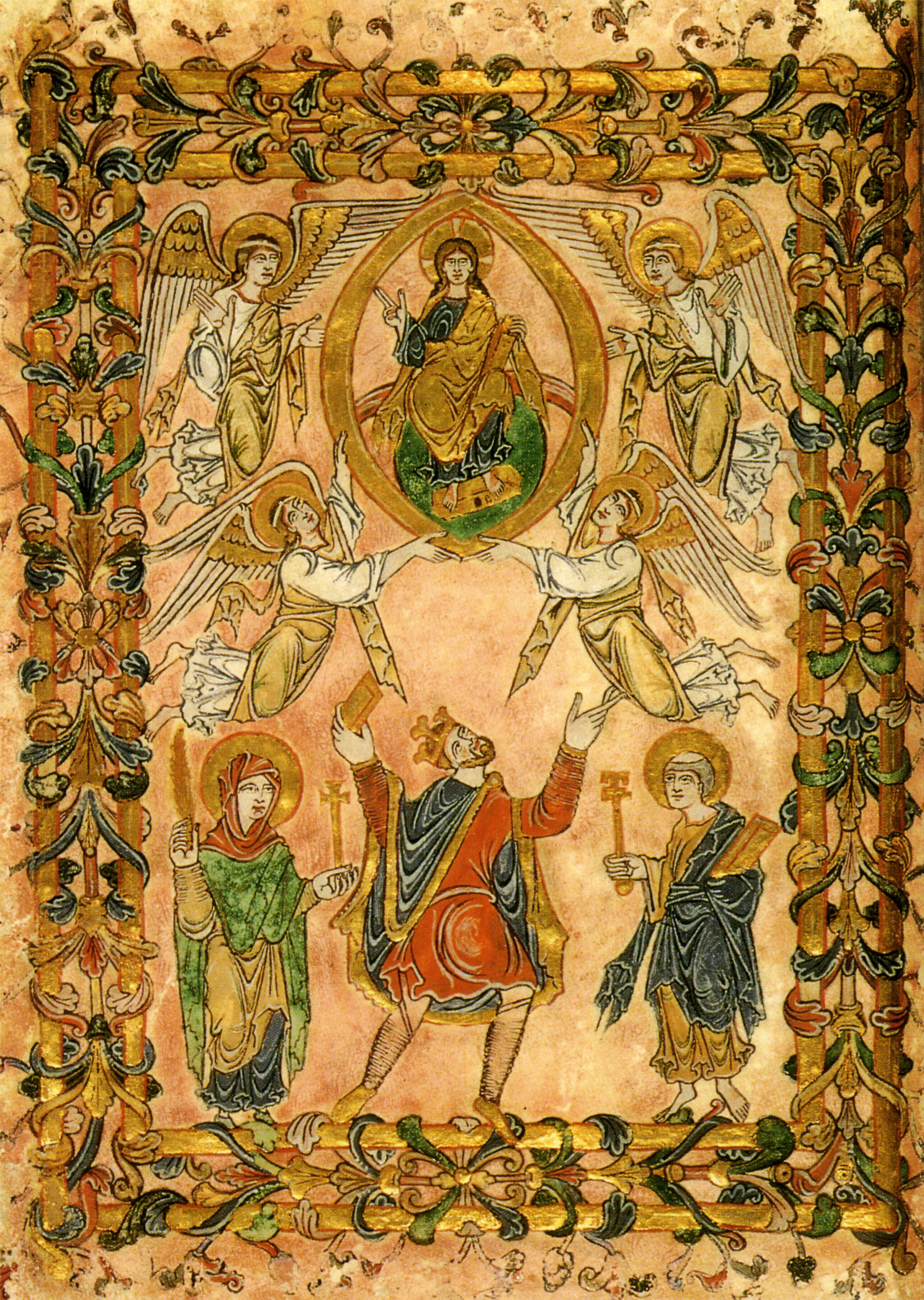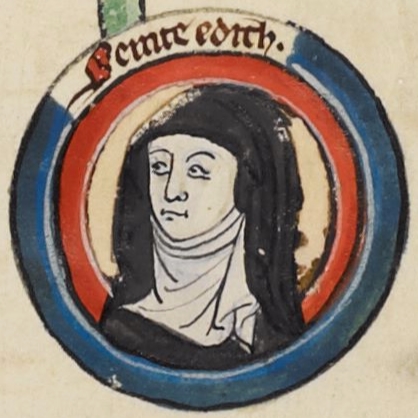by Susan Flantzer
© Unofficial Royalty 2019

Sweyn Forkbeard, from an architectural element in the Swansea Guildhall, Swansea, Wales; Credit – Wikipedia
Born about 960, Sweyn Forkbeard was the son of Harald I Bluetooth, King of Denmark and Norway and probably his first wife Gunhild of Wenden. Harald Bluetooth, who unified Denmark and Norway in the tenth century and eventually lost Norway, was the inspiration for the name of the wireless technology company Bluetooth. The Bluetooth logo ![]() is a bind rune merging the runes
is a bind rune merging the runes ![]() (Hagall) (ᚼ) and
(Hagall) (ᚼ) and  (Bjarkan) (ᛒ), Harald’s initials.
(Bjarkan) (ᛒ), Harald’s initials.
Besides Gunhild, Harald Bluetooth had two other wives: Tove of the Obotrites and Gyrid Olafsdottir of Sweden. Harald had three other children besides Sweyn but there is no certainty which of his wives were their mothers.
Sweyn Forkbeard’s siblings:
- Tyra Haraldsdatter, married (1) Styrbjörn Starke, Crown Prince of Sweden (2) King Olav I of Norway
- Haakon (born around 961)
- Gunhilde, (died 1002), married Pallig, Jarl and Ealdorman of Devonshire, both were killed in the St. Brice’s Day Massacre in November 1002
In 986, Sweyn became King of Denmark. Sweyn and Olav I, King of Norway sailed up the River Thames and raided London in 994. Æthelred II, King of the English, and his council bought them off with 22,000 pounds of gold and silver, instituting the policy of paying regular protection money called Danegeld to the Danes. These raids and the subsequent payment of Danegeld continued for several years.
Sweyn later allied with Olof Skötkonung, King of Sweden, and Eirik Hákonarson, Jarl of Lade, and together they ambushed Sweyn’s former ally Olav I, King of Norway in the Baltic Sea. Norway was divided up among the three victors.

Sweyn Forkbeard invading England; Credit – Wikipedia
According to The Anglo-Saxon Chronicle, in 1002 Æthelred II, King of the English was told that the Danish men in England “would faithlessly take his life, and then all his councilors, and possess his kingdom afterward.” In response, Æthelred “ordered slain all the Danish men who were in England.” St. Brice’s Day Massacre occurred on November 13, 1002, the feast day of St. Brice, fifth-century Bishop of Tours. There was a significant loss of life including Gunhilde, the sister of Sweyn Forkbeard. In retaliation, Sweyn attacked England during 1003 – 1004, burning Norwich but a famine in 1005 caused him to retreat. The Danish invaders returned and within a few years, all of England came under Danish rule. On Christmas Day in 1013, Sweyn was formally proclaimed King of England. Æthelred had fled to the Isle of Wight and then to Normandy.
Sweyn’s marriage history is sketchy. Supposedly, Sigrid Storråda (the Haughty) was the daughter of Skogul-Tosti, a powerful Swedish nobleman and the widow of Eric the Victorious, King of Sweden. Gunhilda of Wenden supposedly was a Polish or Slavic princess. Both women are mentioned in the Norse sagas but there is very little information about them in medieval chronicles. Sweyn had seven known children but it is uncertain which of the two women are their mothers.
- Harald II, King of Denmark (circa 996/998 – 1018), it is thought Gunhilda of Wenden was his mother
- Cnut the Great, King of England, Denmark, and Norway (circa 995 – 1035), it is thought Gunhilda of Wenden was his mother, married (1) Ælfgifu of Northampton, had two sons Sweyn Cnutsson, King of Norway and Harold Harefoot, King of England (2) Emma of Normandy, had two children including Harthacnut, King of Denmark and England
- Estrid Svendsdatter (990/997 – 1057/1073), married Ulf, Jarl of Orkney, had two sons including Sweyn II, King of Denmark
- Gytha
- Gunnhild
- Santslaue, a nun in England
- Thyra
Sweyn Forkbeard’s daughter Estrid Svendsdatter was the mother of King Sweyn II of Denmark. Her descendants have reigned in Denmark ever since. One of her descendants, Margaret of Denmark, married James III, King of Scots in 1469, introducing Sweyn’s bloodline into the Scottish royal house. In 1603, James VI, King of Scots inherited the English throne upon the death of Queen Elizabeth I. Since that time, all English and British monarchs have been Sweyn’s descendants.
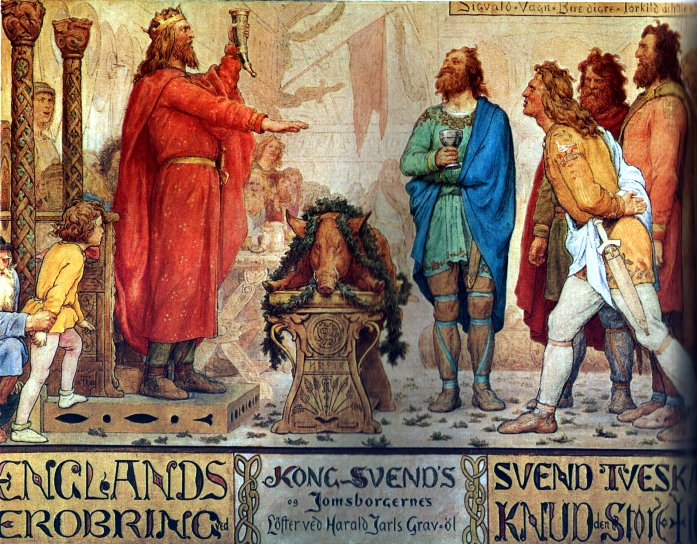
Swen Forkbeard by Lorenz Frølich, circa 1883-1886. The work was made as decoration in Frederiksborg Castle in Denmark and was inspired by the Bayeux Tapestry from the 1000s; Credit – Wikipedia
Sweyn made his English base in Gainsborough, Lincolnshire, and began organizing his new kingdom. However, his reign was short-lived as he suddenly died in Gainsborough on February 3, 1014, at around the age of 54. Although there are reports that Sweyn died after a fall from his horse, a 2015 study speculated that he may have died from Brugada Syndrome, a genetic disorder in which the electrical activity in the heart is abnormal. It increases the risk of abnormal heart rhythms and sudden cardiac death. The study showed that perhaps up to fourteen Danish kings who suddenly died at a relatively young age without being ill possibly died of Brugada Syndrome.
Sweyn’s father Harald Bluetooth had named Roskilde the capital of Denmark in 960, and a small wooden church dedicated to the Holy Trinity was built on the site of the current Roskilde Cathedral, the traditional burial site of the Danish monarchs. Harald Bluetooth was buried at the Holy Trinity Church. Sweyn Forkbeard was first buried in England and his remains were later moved to Denmark where they were interred near his father at the Holy Trinity Church. However, their tombs have never been found.
Sweyn’s younger son succeeded him as Harold II, King of Denmark, and his elder son Cnut (the Great), was proclaimed King of England by the Danes in England. However, leading English noblemen sent a deputation to Æthelred II to negotiate his restoration to the throne. Æthelred returned from exile in Normandy in the spring of 1014 and managed to drive Cnut out of England. In 1016, following the deaths of Æthelred II and his son Edmund Ironside, Cnut became King of England. He succeeded his brother as King of Denmark in 1019. He eventually also became King of Norway, and also ruled parts of Sweden, Pomerania, and Schleswig. Cnut and his sons Harold Harefoot and Harthacnut ruled England from 1016 – 1042. After Harthacnut’s death, the English throne reverted to the House of Wessex under Æthelred II’s younger son Edward the Confessor.
This article is the intellectual property of Unofficial Royalty and is NOT TO BE COPIED, EDITED, OR POSTED IN ANY FORM ON ANOTHER WEBSITE under any circumstances. It is permissible to use a link that directs to Unofficial Royalty.
England: House of Denmark Resources at Unofficial Royalty
- United Kingdom of Great Britain and Northern Ireland Index
- House of Denmark Index
- Coronations before the Norman Conquest (871 – 1066)
Works Cited
- Ashley, M. (1998). The Mammoth Book of British Kings & Queens. New York: Carroll & Graf Pub.
- Cannon, J. and Griffiths, R. (1988). The Oxford Illustrated History of the British Monarchy. Oxford: Oxford University Press.
- Da.wikipedia.org. (2019). Svend Tveskæg. [online] Available at: https://da.wikipedia.org/wiki/Svend_Tvesk%C3%A6g [Accessed 26 Feb. 2019].
- Dodson, A. (2004). The Royal Tombs of Great Britain. London: Duckworth.
- En.wikipedia.org. (2019). Sweyn Forkbeard. [online] Available at: https://en.wikipedia.org/wiki/Sweyn_Forkbeard [Accessed 26 Feb. 2019].
- Flantzer, S. (2015). Æthelred II (the Unready), King of the English. [online] Unofficial Royalty. Available at: https://www.unofficialroyalty.com/aethelred-ii-the-unready-king-of-the-english/ [Accessed 25 Feb. 2019].
- Williamson, D. (1998). Brewer’s British Royalty. London: Cassell.


